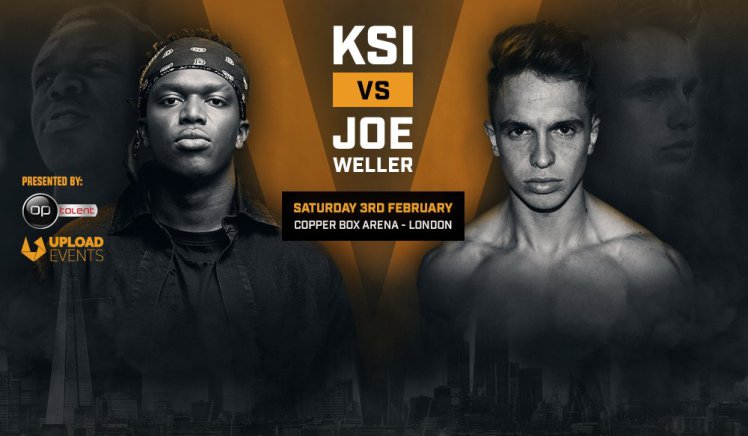The important lessons sport can learn from its YouTuber imitators
Last weekend, YouTubers Joe Weller and KSI broke the internet with their fists.
15 million people have watched a boxing match between the two and showed once again the staggering scale of support that YouTubers and social media personalities have online, especially when they’re joining forces to produce something together.
It’s also especially clear that this is the case when it comes to live events – something there has often been some scepticism about. It taps into two key ideas: one is the fact that a live spectacle is naturally removed from the digitally-native and non-live content they usually produce, and the other is the idea that in a world increasingly dominated by on-demand (especially amongst a younger audience, that is, the same people interested in YouTube influencers) appointment to view still has a place.
But there are caveats to point out here. Not all of the views were live, for a start. About 1.6m viewers are thought to have tuned in at some point during the actual broadcast plus, of course, the number who paid the £66 to attend the fight in person at London’s Copper Box Arena. That would still beat most TV shows aired on UK TV at the same time, but it’s just a fraction of the ultra-impressive 15m views for a boxing match between two YouTubers who certainly aren’t professional boxers: there’s still no doubt that this was certainly a success.
We’ve seen this sort of thing before, as influencer football teams sell tens of thousands of tickets for a football game at Wembley every year – we all knew the phenomenon was massive. And yet, even if they’d sold out the national stadium, that’s still just a fraction of the millions of fans some of the participants can accrue on social media platforms.
It’s a similar story with last weekend’s bout. Both men between them have a combined following of more than 20 million. KSI alone has more than the 15 million who viewed the stream. So in that sense the numbers on the stream are less stratospheric than they might appear at first glance. And yet, in a way they still are: how exactly do a FIFA vlogger and a YouTube prankster get millions of their fans to watch a boxing match?
It shows the power of personalities in the internet sharing age. We know that the most successful influencers are big because of their personalities, perhaps even more than the content they produce. Fans feel like they are a lot closer to a YouTuber than an athlete, mostly because the personality of the YouTuber shines through in a way that it doesn’t for most athletes.
But marrying boxing with YouTube personalities is an interesting juxtaposition, too. Perhaps the recent interest in some of the biggest boxing bouts – Anthony Joshua v Wladimir Klitschko, even Conor McGregor and Floyd Mayweather – is generated by the personalities of the fighters and the fact that the trash talking before the fight usually brings out the personalities behind the boxers. And maybe that lends itself nicely to influencer personalities.
But by far the biggest reason that this is an important phenomenon is the reach that they can get.
Importantly, too, we’re talking about worldwide reach. Since the internet entered our lives, that’s been one of the most feted reasons as to why it’s actually a good thing: the fact you can connect with anyone anywhere on the planet. The world is a smaller place, and we’ll be able to realise that we are more similar than we are different. But whilst sports teams expand into new regions where there’s no chance all of their fans can come to visit their games, the media rights don’t always follow. But live events broadcast on YouTube for free – and with a sponsor, in this case JD Sports – show that where there’s interest, there will be eyeballs on a global scale if it’s done right.
At a time when live-streaming is growing rapidly as a means of broadcast, and when those sports which aren’t tied to deals in specific countries can reach millions of people all over the world and capture the attention of people they could never have imagined reaching before.
We already knew that the personalities of social media influencers were a big draw. Perhaps what we didn’t realise was that this could potentially be applied to live events on a worldwide scale.
About author
You might also like
SPORTEL 2021: Day One Recap
This year’s prestigious SPORTEL convention kicked off in sunny Monaco today, welcoming a host of familiar faces as well as plenty of new ones. Doors opened at 8:30am with businesses
Six Founding Riders Set To Bring The Vision Of The UCI Track Champions League To Life
Olympic Champions, UCI World Champions and World Record holders join the new track cycling competition debuting in November 2021 The UCI Track Champions League is delighted to announce that six
Sports related spending to soar this summer as pre-pandemic life resumes
New insights from eBay Ads UK reveal the potential for brands to engage with an excited but nervous nation as sports events get back on track As pubs and indoor









